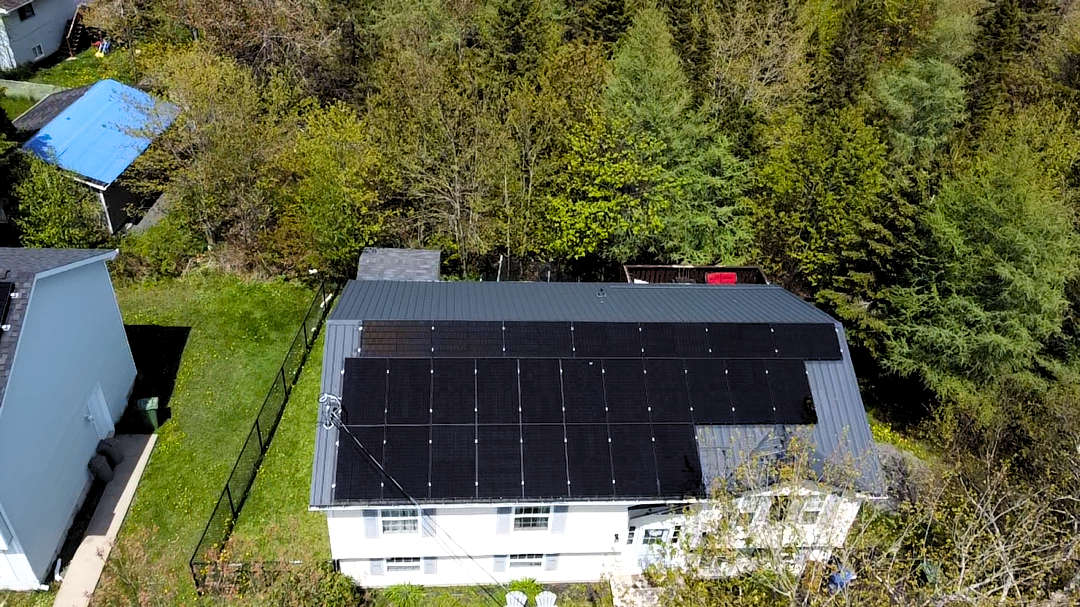Solar Energy For Your Home – What You Can Expect For Solar Energy Savings During The Dark Days Of Winter – Part 2
In our December’s myth-busting blog post, we established that not only do solar panels work in winters, but there is a strong possibility that their efficiency may improve during cooler temperatures. Furthermore, when there’s snow on the ground, your solar output may even improve. The snowy surfaces reflect light back to the panels, allowing them to collect even more electrons.
The second part of our series fulfills the promises we made at the end of our first blog entry, i.e. we will be sharing some useful tips that will help optimize solar power generation for residential users during winters.
Before we discuss specific tips for optimum solar energy use during winters, the following simple steps are always helpful regardless of weather conditions:
- Make sure your home is well-insulated and weatherproofed
- Use energy efficient lighting, such as LED bulbs
- Turn off the lights and other electronics when not in use
- Consider installing thermal curtains on the windows
- If you have a fireplace(s), close the damper when it’s not in use
- Check for leaks in the air ducts before using the furnace
What Are The Best Solar Panels For Winters?
Landscape-oriented panels with vertical racks shed snow faster than their horizontally-racked counterparts. Research shows that horizontal racks actually hold snow beneath the panels, preventing it from dropping to the ground, and potentially freezing and blocking snow on the panels from coming down.
And that’s important for solar production, since snow-covered cells obviously won’t generate any energy. The quicker the snow can melt, the better generation will be. So, if you want the highest productivity in a snowy climate, you may want to consider installing horizontally-oriented vertical-mounted panels.
Ideal Tilt Of Solar Panels
Solar panels will produce a maximum of energy when the sun is directly perpendicular to them. During the winter in the northern hemisphere, for example, the sun is low in relation to the horizon. In this case, for the solar panels to get their best performance, a steep angle of 60° is best. During the spring the best angle is 45°, and during the summer when the sun is high in the sky, it’s best to have a low tilt at 20°.
Tips For Improving Solar Power Efficiency During Winters
1. Maintain your battery bank
Make sure your batteries are installed indoors. If they aren’t, make sure that the compartment for batteries installed outside is properly insulated, as lead-acid batteries can freeze at below zero temperatures.
For off-grid solar systems, you need to have enough supply of anti-freeze distilled water for the batteries. Make sure you keep an eye on the water level. Keep checking your battery voltage. If it falls below 12 Volts DC, you need to charge your batteries.
Most batteries don’t fail immediately, so it is wise to keep checking the battery voltage over time to identify problems beforehand.
2. Adjust the angle of your panels
As discussed earlier, one reason why your panels don’t receive enough sunlight during the winter is that the sun is at a lower angle. To remedy this, use an adjustable rack to modify your panels at a 15-degree angle.
3. Scrape off that excess snow:
After a heavy snowfall, some snow or ice may gather up on your panels. If your panels are on a high rooftop, then we wouldn’t recommend you risking to clean it. Most likely, the dark surface of your panels will attract sunlight and the snow will melt right off.
Depending on the kind of house or roof you have, here is a list of things you can do:
- Wait for the snow to melt off. The steeper your roof is, the faster it will melt and fall off.
- Spray it with a hose. Be careful of the temperature shifts while doing this, you want to melt the snow, not freeze it further.
- You can sweep the panels if you have easy access to the roof. Be mindful not to damage them.
- You can also get a little creative and connect a leaf blower to a PVC pipe or a long plastic air hose to use warm air to melt the snow off your panels.
We hope that our two-part series was both fun reading and informative at the same time. If you are considering going solar, these are perfect times and now you have a guide for optimum solar panel use during winters!
Thanks for Reading!
Brian McKay
(aka The Solar Guy)


For more information about a Solar Energy Solution, including Whole Home Solar PV and Solar Pool Heating solutions for your home or business, please contact AZTEK SOLAR for your free on-site evaluation and ask about the $3,000 cash-back rebate now available.
AZTEK SOLAR is a leading Nova Scotia residential and commercial solar installer, serving Halifax, Dartmouth and the surrounding areas throughout rural Nova Scotia.
With expertise in a wide variety of systems, including Solar PV (grid-tied) systems, solar hot water and solar pool heating systems, AZTEK SOLAR has helped hundreds of Atlantic Canadian homeowners, farm operations, business owners and municipalities lower their energy bills while reducing their carbon footprint.
#SolarIsNow #RenewableEnergy #AztekSolar



